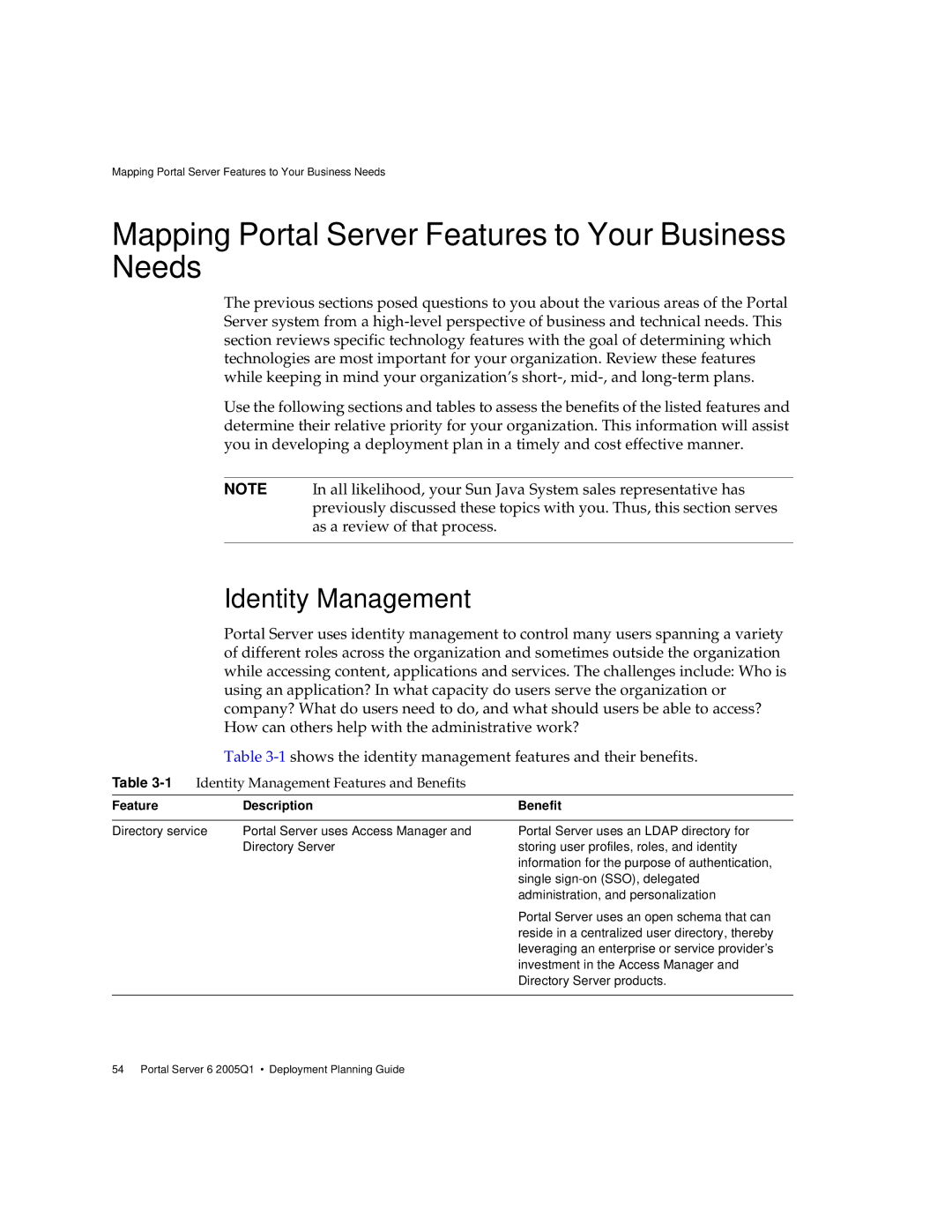
Mapping Portal Server Features to Your Business Needs
Mapping Portal Server Features to Your Business Needs
The previous sections posed questions to you about the various areas of the Portal Server system from a
Use the following sections and tables to assess the benefits of the listed features and determine their relative priority for your organization. This information will assist you in developing a deployment plan in a timely and cost effective manner.
NOTE In all likelihood, your Sun Java System sales representative has previously discussed these topics with you. Thus, this section serves as a review of that process.
Identity Management
Portal Server uses identity management to control many users spanning a variety of different roles across the organization and sometimes outside the organization while accessing content, applications and services. The challenges include: Who is using an application? In what capacity do users serve the organization or company? What do users need to do, and what should users be able to access? How can others help with the administrative work?
Table
Table 3-1 Identity Management Features and Benefits
Feature | Description | Benefit |
Directory service | Portal Server uses Access Manager and |
| Directory Server |
Portal Server uses an LDAP directory for storing user profiles, roles, and identity information for the purpose of authentication, single
Portal Server uses an open schema that can reside in a centralized user directory, thereby leveraging an enterprise or service provider’s investment in the Access Manager and Directory Server products.
